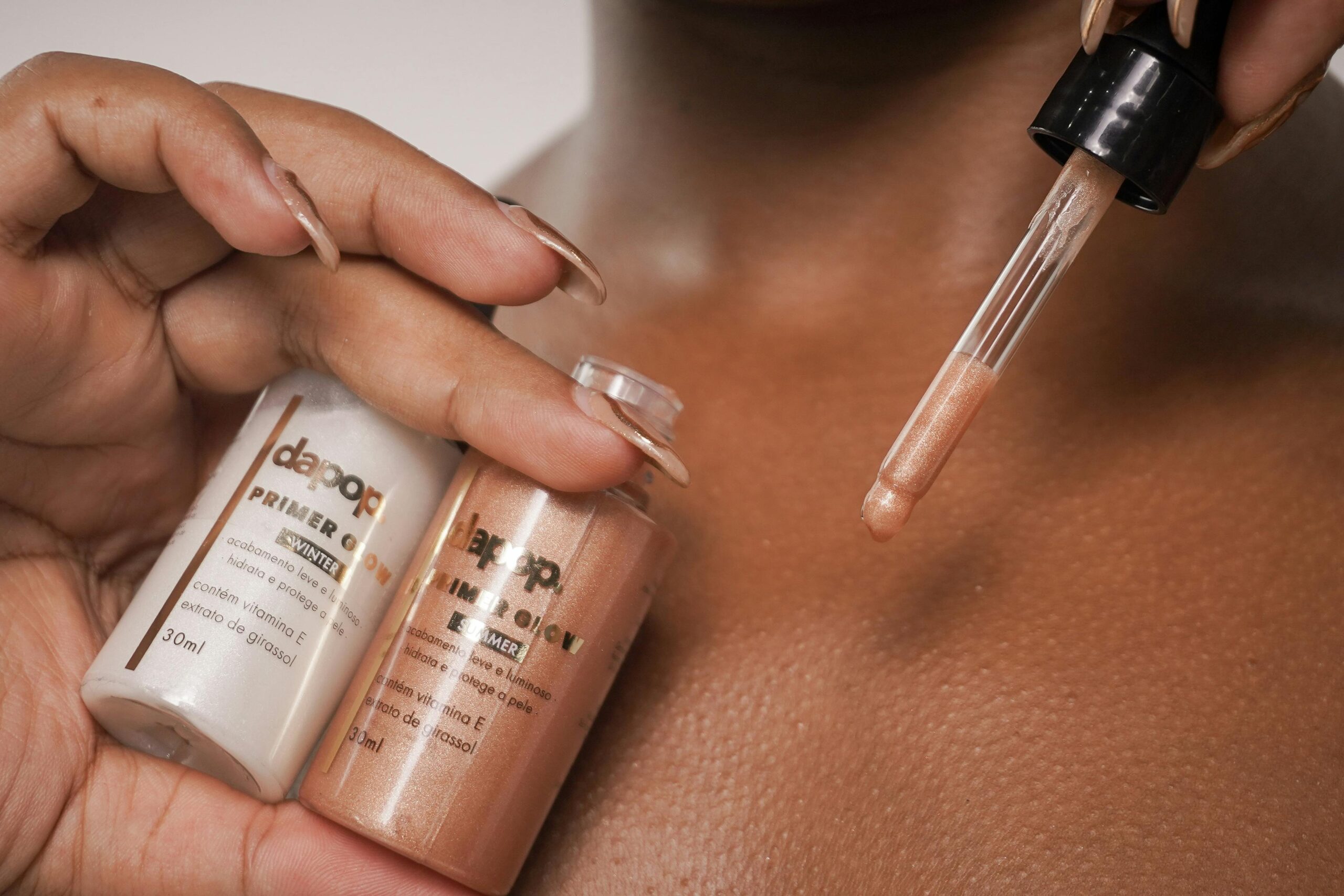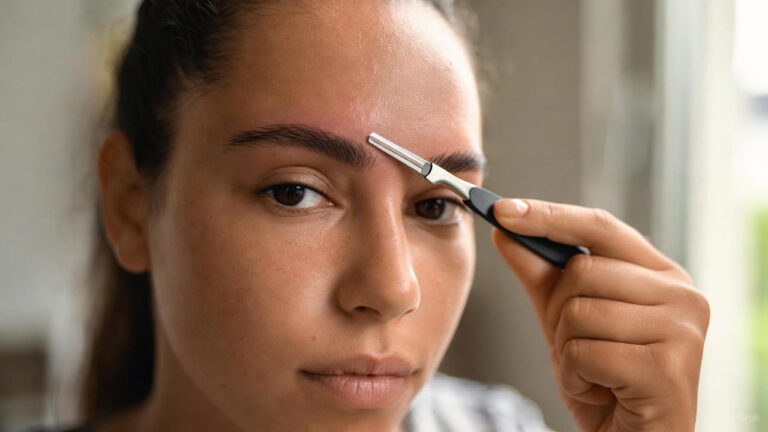Applying makeup is an art, but even the best products can fail without the right foundation. Enter the makeup primer—a simple yet essential step that many overlook. Primer creates a smooth base, helping your makeup glide on effortlessly and stay in place longer. Without it, your makeup may emphasize fine lines, pores, or dry patches, leading to an uneven appearance. Let’s explore why using a makeup primer is a game-changer for achieving flawless makeup application.
Creates a Smooth Surface
One of the key roles of makeup primer is to prepare your skin for the layers of foundation, concealer, and other products. Primers fill in fine lines, blur imperfections, and smooth out uneven skin textures. This ensures that when you apply foundation, it spreads evenly without settling into creases. The result? A flawless, airbrushed look that feels smooth to the touch.
Enhances Makeup Longevity
A primer acts as a barrier between your skin and makeup, ensuring your foundation stays in place throughout the day. Without a primer, natural oils can break down makeup, leading to smudging, creasing, or fading. Primers help to keep your makeup fresh for hours, reducing the need for constant touch-ups.
Controls Oil and Shine
For those with oily skin, keeping makeup matte and in place can be a challenge. Primers designed for oily skin help control excess oil, reducing shine and keeping your makeup looking fresh. By absorbing excess oil, these primers prevent your foundation from sliding off your face or becoming patchy. This is especially helpful for long workdays or special events when you want to maintain a matte finish.
Minimizes the Appearance of Pores
Large, visible pores can often make your makeup look less smooth. Many primers are specifically formulated to blur and reduce the appearance of pores. These products fill in the pores, creating an even surface that reflects light, giving your skin a soft, filtered finish. The result is a smoother, more refined complexion that looks perfect both in person and on camera.
Hydrates and Preps the Skin
Primers aren’t just for smoothing—they can also hydrate the skin. Many primers are infused with moisturizing ingredients like hyaluronic acid or glycerin, which help keep your skin hydrated throughout the day. This is especially beneficial for those with dry or combination skin, as it ensures your makeup doesn’t highlight dry patches or cause flakiness.
Helps Makeup Adhere Better
Without primer, some makeup products may not adhere as well to your skin, leading to a patchy or uneven finish. Primer creates a tacky surface that grabs onto makeup, ensuring it stays put. This is especially important for products like foundation, blush, and eyeshadow, which can otherwise wear off or shift during the day.
Reduces the Need for Heavy Foundation
When your skin looks smoother and more even from using a primer, you may find that you need less foundation. This can help your makeup feel lighter and more comfortable, while still achieving great coverage. By using less foundation, you also avoid the risk of your makeup looking cakey or heavy.
Enhances Color Payoff
Primers don’t just improve texture—they can also enhance the color payoff of your makeup. Eyeshadow primers, for instance, make pigments appear more vibrant and prevent them from creasing. Face primers do the same for foundation and blush, allowing the true colors to shine through without fading or dulling throughout the day.
Types of Primers for Different Skin Concerns
Not all primers are created equal. Depending on your skin type or concerns, you can choose a primer that specifically targets those issues:
- Mattifying Primers: Ideal for oily skin, these primers absorb excess oil and reduce shine for a long-lasting matte finish.
- Hydrating Primers: Perfect for dry skin, hydrating primers add moisture and prevent makeup from clinging to dry patches.
- Blurring Primers: These primers smooth out uneven skin texture and minimize the appearance of pores, providing a flawless finish.
- Color-Correcting Primers: For those with redness, dullness, or discoloration, color-correcting primers neutralize uneven skin tones to create a balanced base.
How to Apply Makeup Primer for Best Results
To get the most out of your primer, application is key. Start by cleansing and moisturizing your skin. Once your moisturizer is fully absorbed, apply a small amount of primer to your face. Focus on areas where your makeup tends to crease or wear off, such as your T-zone, under the eyes, and around the nose. Gently pat the primer into your skin with your fingertips, ensuring even coverage. Wait a minute or two for the primer to set before applying foundation or other makeup.
Conclusion
Using a makeup primer is a simple yet crucial step for achieving a flawless, long-lasting makeup look. It smooths your skin, controls shine, and helps your makeup adhere better, ensuring a polished finish that lasts all day. Whether you’re prepping for a busy day or a special event, incorporating a primer into your routine will make a noticeable difference in the quality and longevity of your makeup.
FAQs
1. What does a makeup primer do?
A makeup primer creates a smooth base for your makeup, fills in fine lines, blurs imperfections, and helps your makeup last longer. It also controls shine and keeps makeup from settling into pores or creases.
2. Do I need to use a primer if I have dry skin?
Yes, a hydrating primer can be very beneficial for dry skin. It helps to keep your skin moisturized, prevents makeup from clinging to dry patches, and gives your foundation a smoother finish.
3. How much primer should I use?
You only need a small amount of primer for your entire face. A pea-sized amount is usually enough to cover your T-zone, cheeks, and chin. Using too much primer can make your makeup feel heavy.
4. Can I use a primer without foundation?
Yes, you can use primer on its own to smooth your skin and control shine. Some primers also have skincare benefits, such as hydrating or mattifying, so they can still improve your skin’s appearance even without makeup.
5. How long should I wait after applying primer before putting on makeup?
After applying primer, wait about one to two minutes for it to set. This allows the primer to fully absorb into your skin and create a smooth base for your foundation or other makeup products.
6. Are there primers specifically for oily skin?
Yes, mattifying primers are designed specifically for oily skin. They help absorb excess oil, reduce shine, and keep your makeup looking matte throughout the day.
7. Do I need to use a primer with a tinted moisturizer?
While tinted moisturizers are lighter than foundations, using a primer underneath can still help improve the texture and longevity of the tinted moisturizer. It can also help control shine or add hydration, depending on the primer you choose.
8. Can primer help reduce the appearance of pores?
Yes, many primers are designed to blur and minimize the appearance of pores. These primers fill in pores, giving your skin a smooth and even texture, which leads to a flawless makeup application.
9. Is it okay to wear primer every day?
Yes, wearing primer daily is perfectly fine. In fact, many primers contain beneficial ingredients like antioxidants or SPF that protect and improve the skin, making them a great addition to your daily routine.
10. Can I use different primers for different areas of my face?
Yes, if you have combination skin or multiple concerns, you can use different primers for different areas. For example, you could use a mattifying primer on your T-zone and a hydrating primer on your cheeks.



